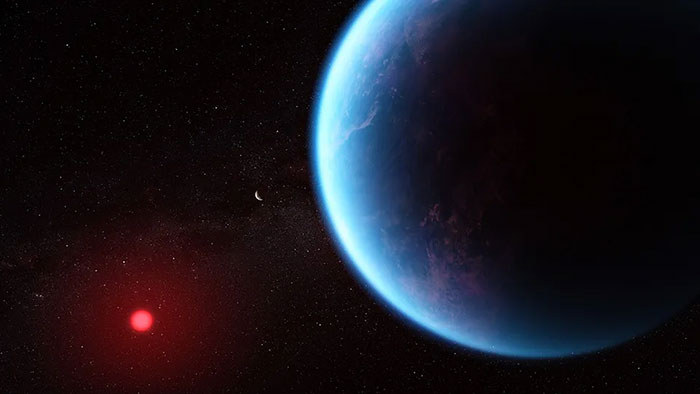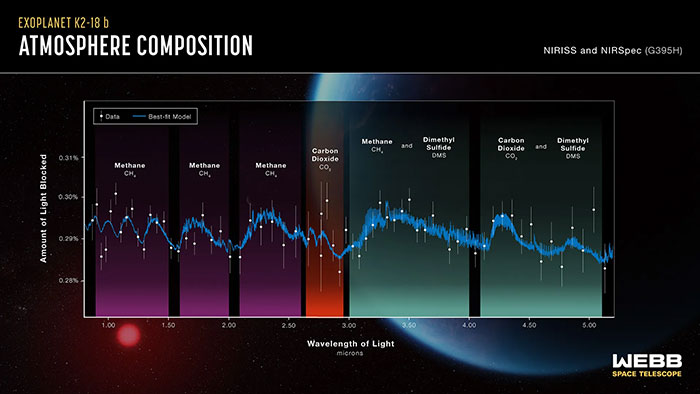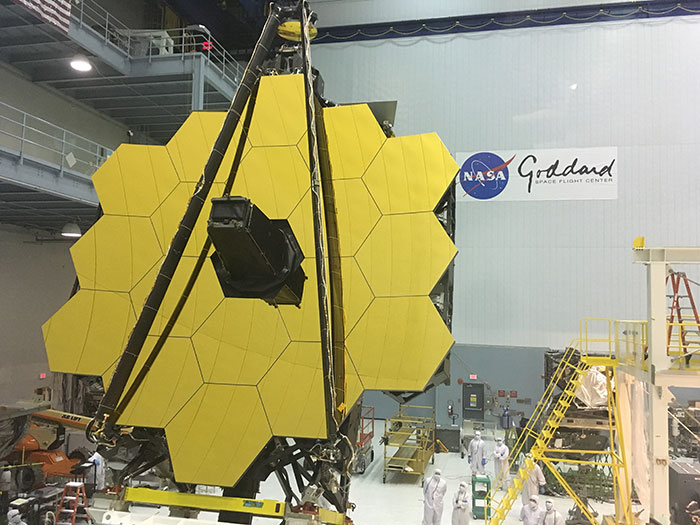Astronomers and scientists are waiting with bated breath to find out whether observations from Planet K2-18b can confirm the theory of alien life on the exoplanet.
Exoplanets are planets that orbit stars outside our solar system. Space agencies have long been trying to venture on and find signs of life beyond our solar system.

Image credits:NASA, CSA, ESA, J. Olmsted (STScI)
Much excitement was created last year after scientists detected a molecule called dimethyl sulfide (DMS) in the atmosphere of Planet K2-18b. DMS is a biosignature gas here on Earth, and most of it on our planet is emitted from phytoplankton in marine environments. Hence, detecting the presence of DMS in Planet K2-18b’s atmosphere sent shockwaves through the field, as it hinted at the possibility of similar marine life on the exoplanet.
The observations collected on April 26 from the James Webb Space Telescope will hopefully confirm the presence of DMS in the exoplanet’s atmosphere, according to theDaily Mail.However, it would take several months for the results to be processed, authenticated, and published before scientists can announce any possible (good or bad) news to the world.
The findings are expected to confirm the presence of dimethyl sulfide (DMS) in the atmosphere of Planet K2-18b

Image credits:NASA, CSA, ESA, R. Crawford (STScI), J. Olmsted (STScI)
In addition to the detection of DMS, the presence of carbon-bearing molecules also created excitement last year around Planet K2-18b.
Nikku Madhusudhan, an astronomer at the University of Cambridge, also announced last year that he and his team, using the James Webb Space Telescope, found the presence of carbon-bearing molecules, including methane and carbon dioxide, on the very same exoplanet. These suggested K2-18b could be a hycean exoplanet “with the potential to possess a hydrogen-rich atmosphere and a water ocean-covered surface,” according to a NASAstatementreleased last September.
Results from the James Webb Space Telescope will need months of processing before any confirmation can be made

Image credits:NASA Goddard
“Our findings underscore the importance of considering diverse habitable environments in the search for life elsewhere,” Nikku explained in the same statement. “Traditionally, the search for life on exoplanets has focused primarily on smaller rocky planets, but the larger Hycean worlds are significantly more conducive to atmospheric observations.”
The team announced last year that they would continue further research to confirm and validate their theories.
“Our ultimate goal is the identification of life on a habitable exoplanet, which would transform our understanding of our place in the universe,” Nikku said at the time. “Our findings are a promising step towards a deeper understanding of Hycean worlds in this quest.”You May Like"It Will Cause Casualties": Scientist Addresses The City-Leveling Asteroid Threat For 2032Lei RVPassengers Upset After Plane Makes Emergency Landing Due To “Serious Medical” Crisis On BoardKarina BabenokTitan Sub’s Eerie Last Moments Exposed In Newly Released Audio: “A Disaster Waiting To Happen"Lei RV
Lei RV
Karina Babenok
News